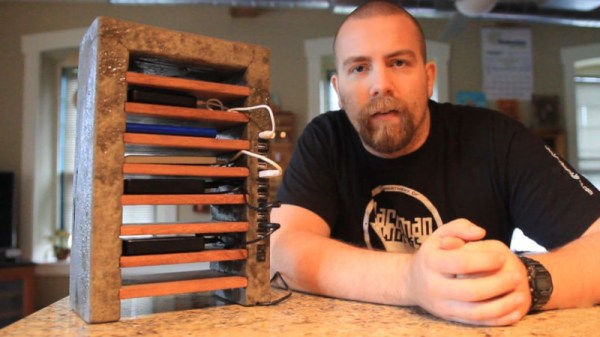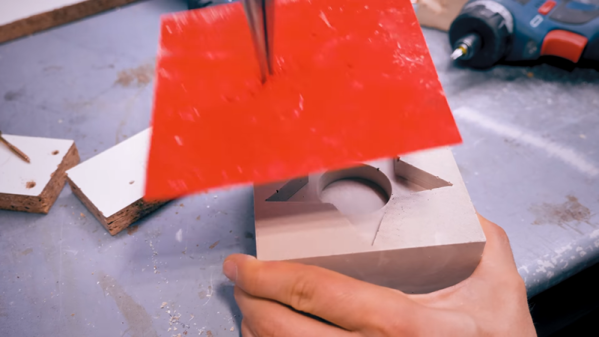In a lot of fields – motorsport, space exploration, wearables – lighter is better. But it’s not always the case. When you want to damp vibration, stop things moving around, and give things a nice weighty feel, heavier is the way to go. This is the case for things like machine tools, anvils, and yes – speakers. Using this philosophy, [SoundBlab] built a set of concrete speakers. (Youtube link, embedded below)
The concrete speaker enclsosures are sized for 3″ drivers, and were cast using two measuring jugs as the mold. This gave the final product a smooth and glossy surface finish, thanks to the surface of the plastic used. The concrete was also agitated during the casting process to minimise the presence of air bubbles in the mixture.
Once cast, the enclosures are fitted with plywood end caps which mount the Fountek FE85 speaker drivers. These are a full-range driver, meaning no cross-overs or other drivers are required. The speakers are then mounted on stands constructed from wood edging, which are stained in a contrasting colour for a nice aesthetic touch. Felt pads are placed on the base, and polyfill inside the enclosure to further minimise any unwanted vibrations.
The sound test confirms the speakers perform well, and they look great as a part of a lounge audio setup. We think they make an excellent pair of bookshelf speakers, which would be ideal for comfortable listening at moderate volume levels.
We’ve seen many speaker builds at Hackaday, from 3D-printed omnidirectional builds to the more classical designs. Video after the break.
Continue reading “Concrete Speakers Are Attractive And Functional”

















